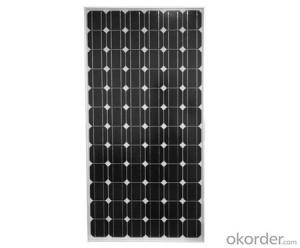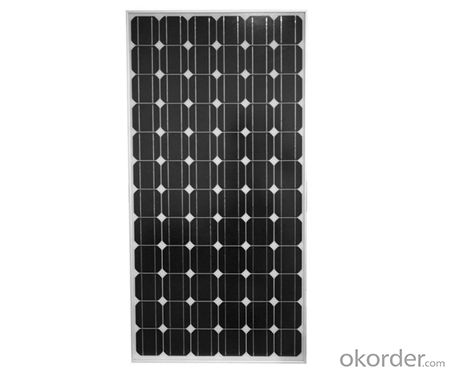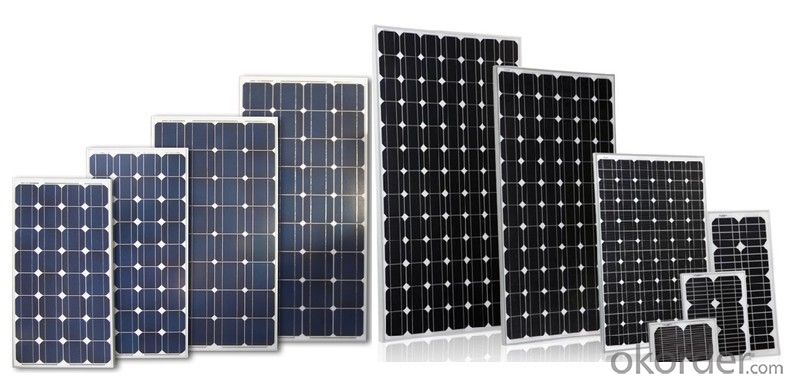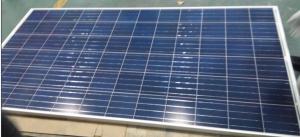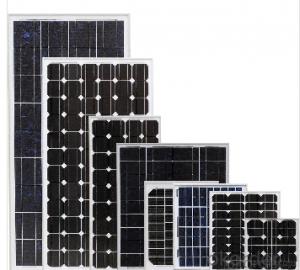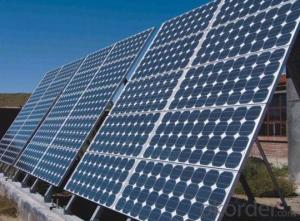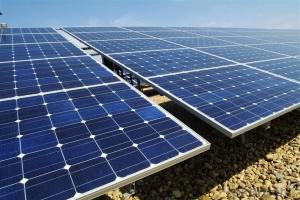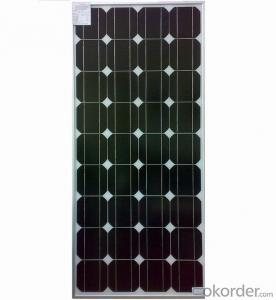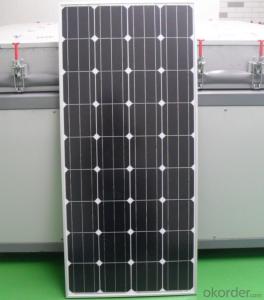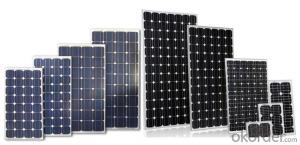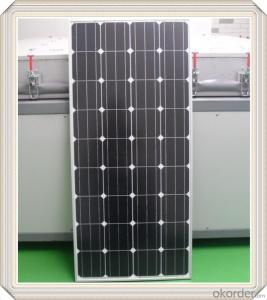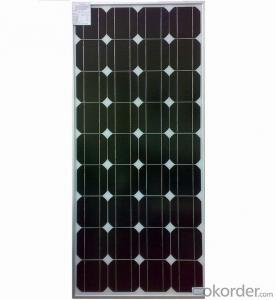Harbor Freight 270w CNBM Solar Monocrystalline Series (250w—270w) Solar Panels
- Loading Port:
- China main port
- Payment Terms:
- TT OR LC
- Min Order Qty:
- 10000 watt
- Supply Capability:
- 500000 watt/month
OKorder Service Pledge
OKorder Financial Service
You Might Also Like
Specification
CNBM Solar Monocrystalline Series III (250W—260W)
Characteristics
Max Power Voltage Vmp(V) | 30.1 | 30.2 | 30.4 | ||
Max Power Current Imp(A) | 8.32 | 8.44 | 8.55 | ||
Open Circuit Voltage Voc(V) | 37.5 | 37.6 | 37.7 | ||
Short Circuit Current Isc(A) | 8.87 | 8.99 | 9.10 | ||
Max Power Pm(W) | 250 | 255 | 260/265 | ||
Temperature Coefficient of Cells
NOCT | 45℃±2℃ | |
Temperature Coefficients of Isc (%/℃) | - 0.0492 | |
Temperature Coefficients of Voc (%/℃) | – 0.3374 | |
Temperature Coefficients of Pmp (%/℃) | –0.4677 | |
Mechanical Data
Dimension | 1638 x 982 x 40 mm | |
Weight | 19.5kg | |
No. of Cells and Connections | 60 (6 x 10) | |
Tolerance | 0~+5W | |
Cell Monocrystalline Cell | 156 x 156 mm | |
Packing | 700 Pcs/40ft(H) Container | |
Limits
Operating Temperature | –40 °C to +85°C | |
Storage Temperature | –40 °C to +85°C | |
Max System Voltage | 1000VDC(IEC) / 600VDC(UL) | |
IV Curve
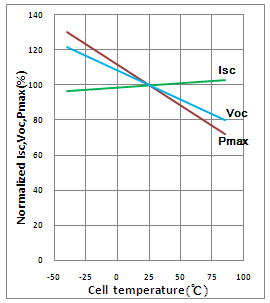
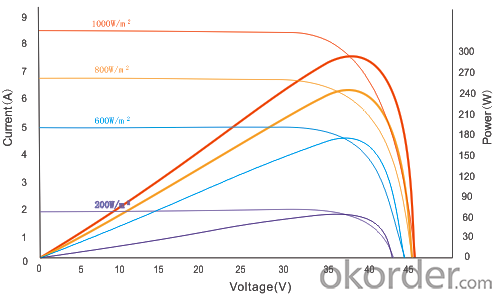
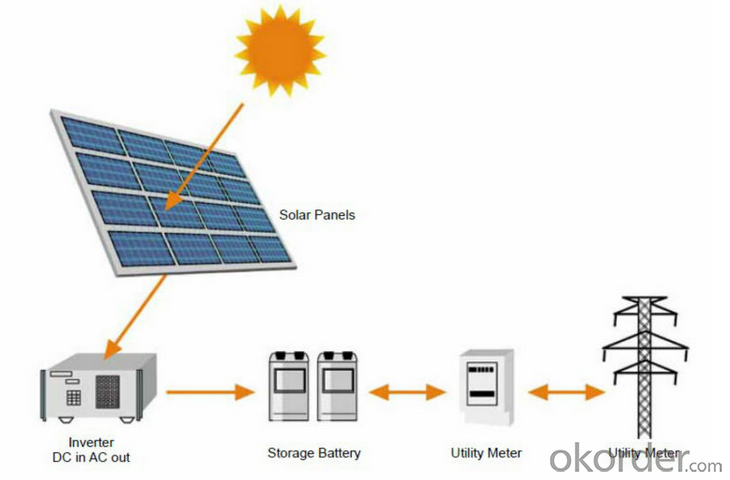
Image
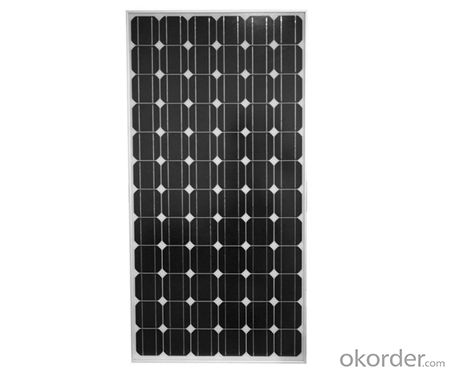
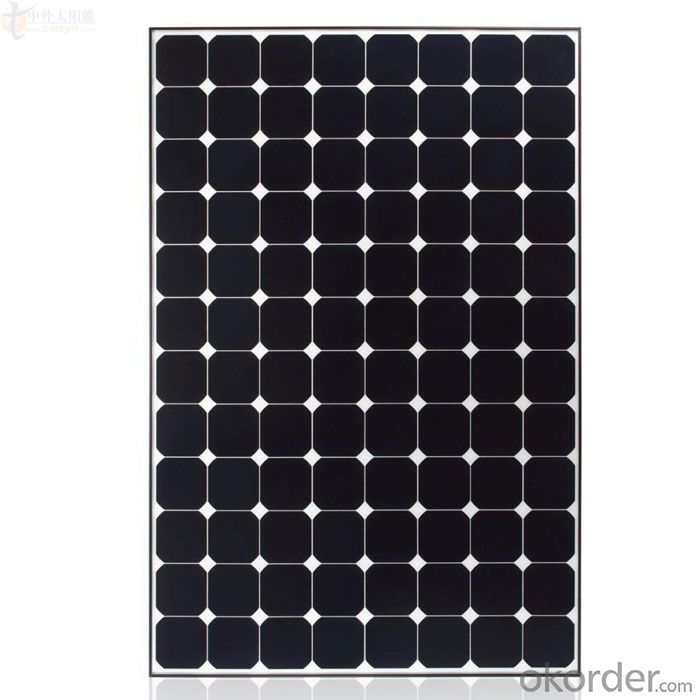
Guarantees
Products Guarantee 12 yrs free from defects in materials and workmanship
Performance Guarantee No less than 90% within 10yrs and no less than 80% within 25yrs
Certificates TUV (IEC61215&IEC61730), VDE(IEC61215&IEC61730), UL, CE
FAQ
1. Q: Do you have your own factory?
A: Yes, we have. Our factory located in Jiangsu province.
2. Q: How can I visit your factory?
A: Before you take off from your country, please let us know. We will show you the way, or arrange time to pick you up if possible.
3. Q: Do you provide free sample?
A: Usually we do not offer free sample
4. Q: Could you print our company LOGO on the nameplate and package?
A: Yes, we can do that.
- Q: Can solar panels be installed on a farm or agricultural facility?
- Yes, solar panels can be installed on a farm or agricultural facility. In fact, many farmers and agricultural facilities are increasingly adopting solar energy as a sustainable and cost-effective solution to meet their energy needs. Solar panels can be installed on roofs, open fields, or unused land, providing clean and renewable energy while minimizing the environmental impact. Additionally, solar installations on farms can help reduce electricity costs, improve energy independence, and contribute to a greener and more sustainable farming practice.
- Q: I am doing a project on solar energy at the moment and I was just wondering how.
- Sunlight okorder /
- Q: If you were to be asked to write a material(s) report on either -solar panelsor -aircraft fuselageWhich would you choose?well i was asked to choose between these two,so i guess that if i choose what the majority wouldn't, i might just score a little bit higher,what do you think?if you are the lecturer you would want something different right?
- Fuselage, solar panels are boring...check out the design considerations for the fuselage of the old SR-7 Blackbird, a really amazing aircraft in its day.
- Q: Also, what's the solar panel's rate of producing electricity?
- Natural gas is stored energy- once you use it up it's gone. Solar panels make energy for decades. Thin film solar is around 0% while crystalline silicone might be around 25%.
- Q: I have purchased a 2 volt LED lantern from argos, it comes with a built in 6 volt 4ah sealed acid battery. What I wanted to know is would I be able to charge it using my 6 volt solar panel?
- If it has a 6 volt battery- is it marked 2 volts on an external plug? If so, there is a resistor inside to drop the potential the battery sees. The battery itself could be slipped out and recharged easily from your 6 volt panel. Just determine how much current (in Amps or Milliamps) the panel produces nominally and divide that into 4 and add one fourth of that length of time to make up for system losses. This will tell you how many hours it should charge assuming your starting voltage of the battery is above .5 volts. and the panel is at 3 volts potential or higher. So if your panel puts out amp at 0AM, you would charge for 5 hours. 4 divided by is 4 and one fourth of that is so 4 plus is 5. It is a little more involved than that, but as a rule of thumb. Also do not discharge tha lantern to the point of no light output. LEDs are efficient, but their current will add up. If it is suggest to be able to use the lantern for up to 8 hours on a charge, stick to that value. Lead acid batteries have best longevity when discharged only to 80 percent capacity. Once battery is charged- disconnect from charging source.
- Q: Can solar panels be installed in areas with high winds?
- Yes, solar panels can be installed in areas with high winds. However, it is important to design and install the solar panel system with wind load considerations. Proper anchoring and structural support should be implemented to ensure the panels can withstand strong winds without causing any damage.
- Q: I am writing some mock legislation for a school club and I need to know some of the environmental effects of solar panels. Also, where can I find specific studies(like from colleges and/or universities) proving these benefits as well as benefits and reasons of going green.
- The social earnings is that with photograph voltaic panels they help decrease pollution that fouls the air that the ordinary public breath and it will supply up/decrease killing human beings for the supplies used now (oil gasoline) and likewise social is they gained't could dig in those risky mines for coal, which would be a social earnings. Economically it is going to pay off in the money sooner or later once you pay-off for installation them. Environmentally they help with removing pollution from the different supplies (coal, oil gasoline) additionally nuclear potential is barely stable for potential, yet commit it to memory remains turns right into a waste which will exchange right into a pollutant.
- Q: DIY, buying solar panels, room is barely 200 sq. ft. have a 5000 btu air conditioner, how many watts do I need, thinking of buying 75 watt solar panels, have space on the roof.
- It may cost you about $650, you can also learn building it yourself so you can save much money...
- Q: how to market solar energy products?
- It depends upon your product. If it is a solar panel, I want to know if it is a photovoltaic panel or a thermal panel. If you don't know enough to know the difference for your question it might be somewhat difficult to suggest others should buy them. Products have to be marketed to a need either already felt or not so apparent. Photovoltaic panels supply an electric need and will offset electrical usage or may supply the grid if there is excess power. A discussion of payback periods including property values will be needed in any event. Thermal panels supply heat and hot water. They are more efficient than photovoltaic panels and will give faster payback times. (are cheaper) If you are a bit more specific more information may be possible.
- Q: I live in Hawaii and having a solar panel is not a bad idea since we have plenty of sun the only problem is that it cost a lot of money and takes many years before you get your money back. There are kits available where you can make and install your own solar panel and wind turbine but is it bull **** or is it a good deal?
- If you're in Hawaii, number one, be sure to get a solar water heater. Guaranteed fast payback. Now about those kits. Avoid the kind that says you can make your own panels for under $200. Those are scams. If you're in CC of Honolulu, you will not be allowed to connect that kind of panel to your house - it doesn't meet National Electrical Code because it doesn't have a safety rating like UL. There are kits for grid-tied solar that run from $6000 on up. That's the kind that can actually save you money. I don't know whether you are allowed to install it yourself, though. In California, you can, as long as you get the inspection, same as any other building project. In spite of being further south, Honolulu gets about the same amount of sun as we do in San Jose, California. That's because our area is dry, and you have more clouds and rain during an average year. If you're in one of the wet valleys like Manoa or Palolo, obviously the situation would only be worse. But your electric rates are high, so you have a good chance of making your money back. Very few sites are really good for wind turbines. You cannot just put it on your roof in the city - it needs to up high, where the wind is strong and steady. That's why you see turbine mounted on towers. Also, because it has moving parts, it's going to wear out. Finally, you know how cars rust out quickly there compared to the mainland? Same thing with a wind turbine.
Send your message to us
Harbor Freight 270w CNBM Solar Monocrystalline Series (250w—270w) Solar Panels
- Loading Port:
- China main port
- Payment Terms:
- TT OR LC
- Min Order Qty:
- 10000 watt
- Supply Capability:
- 500000 watt/month
OKorder Service Pledge
OKorder Financial Service
Similar products
Hot products
Hot Searches
Related keywords
